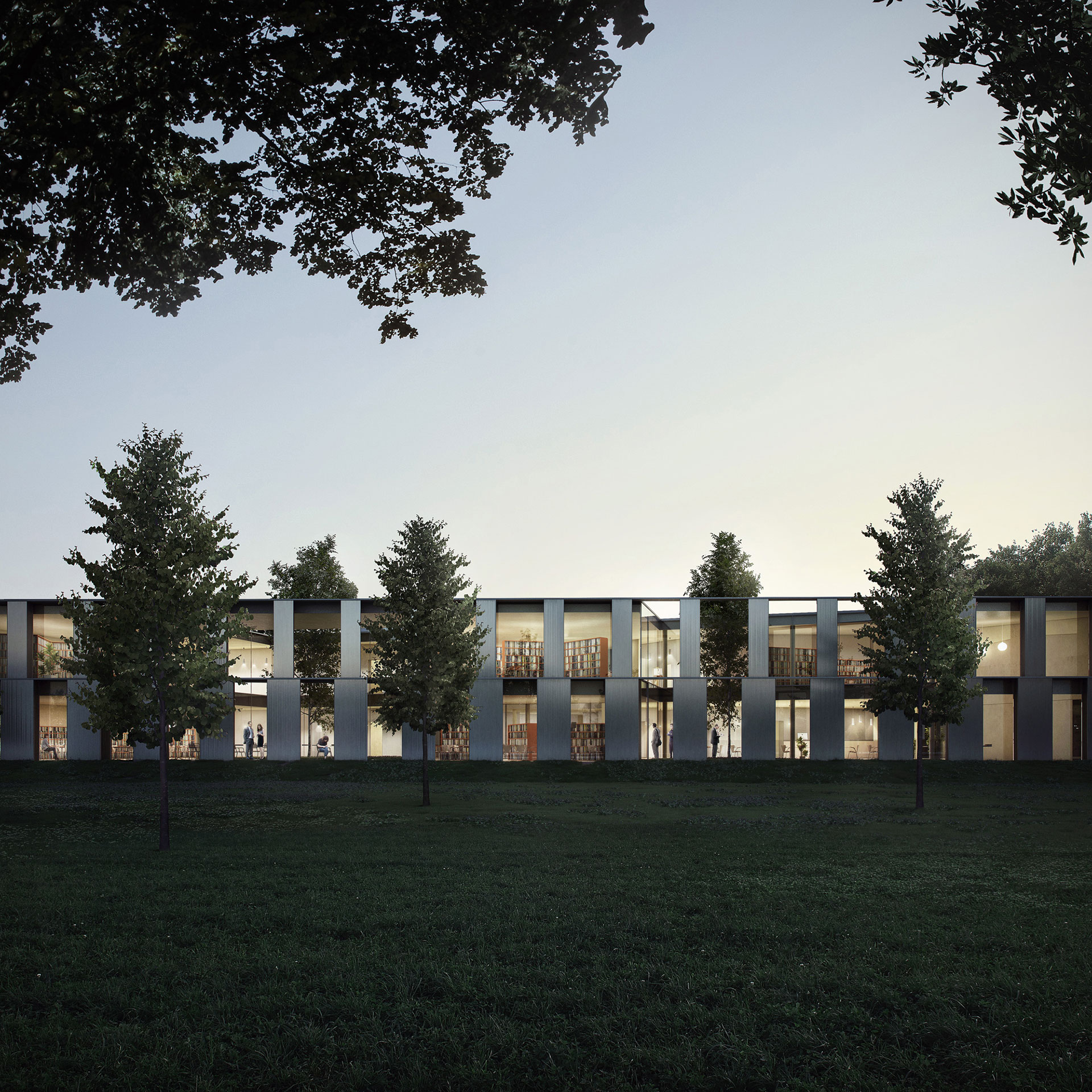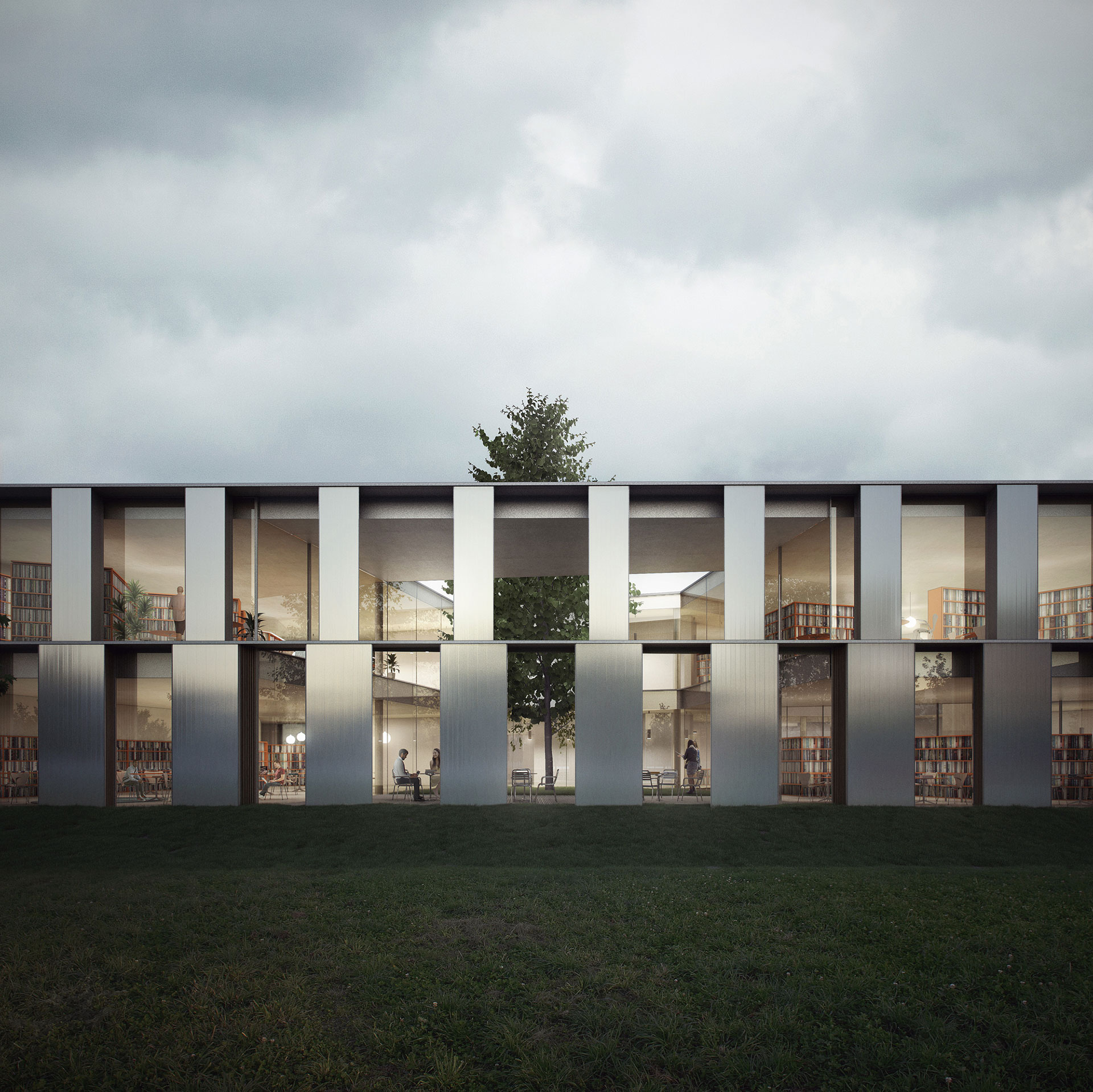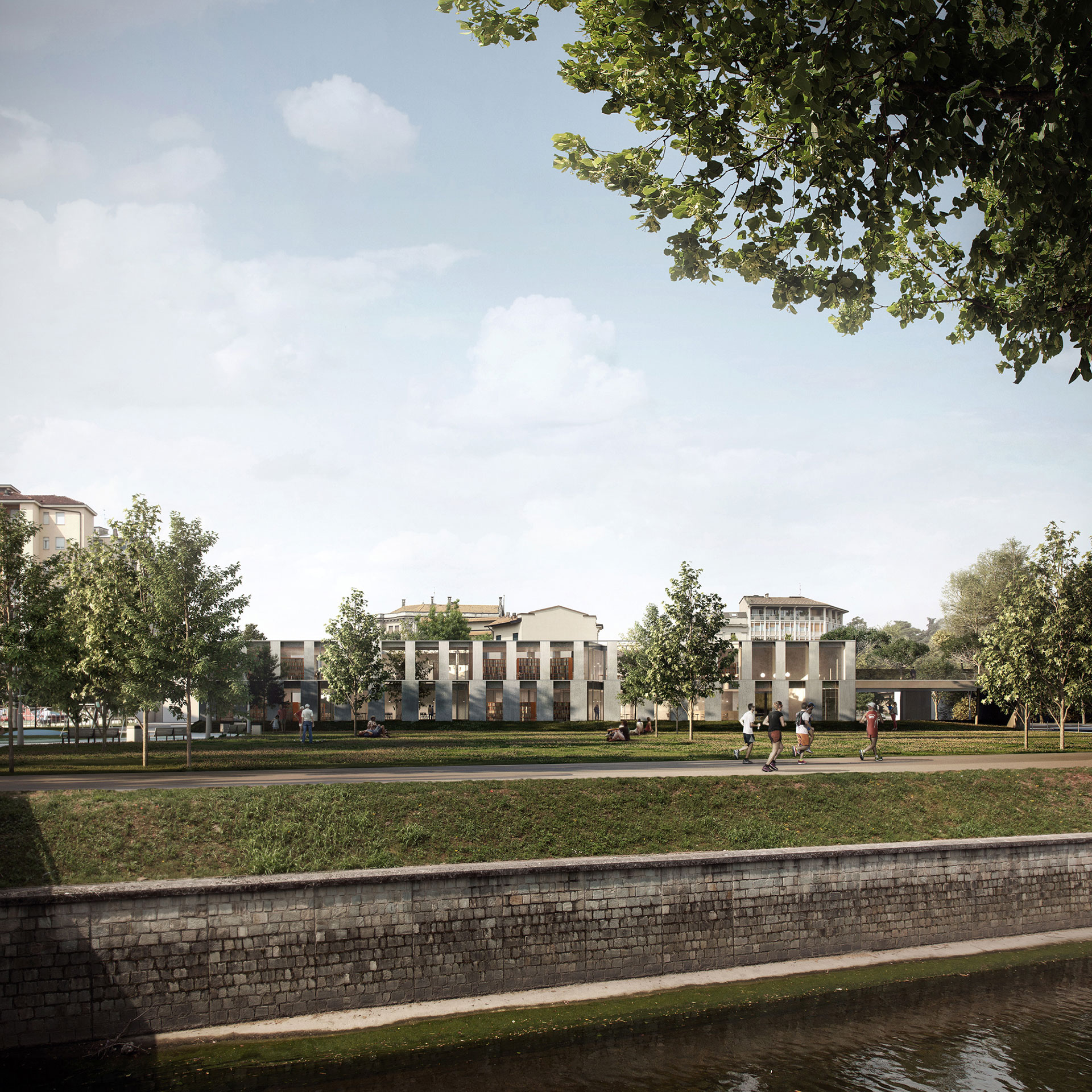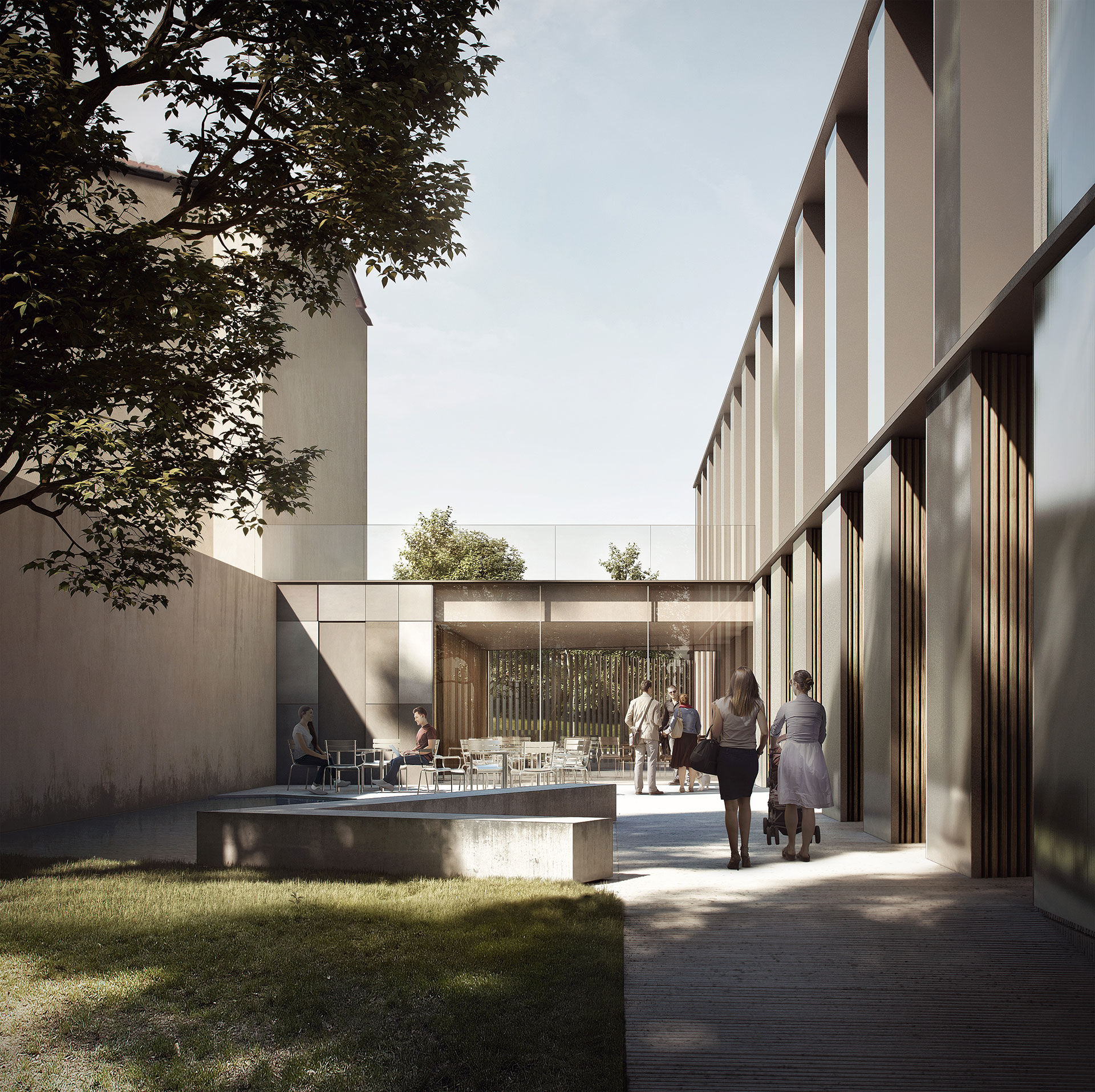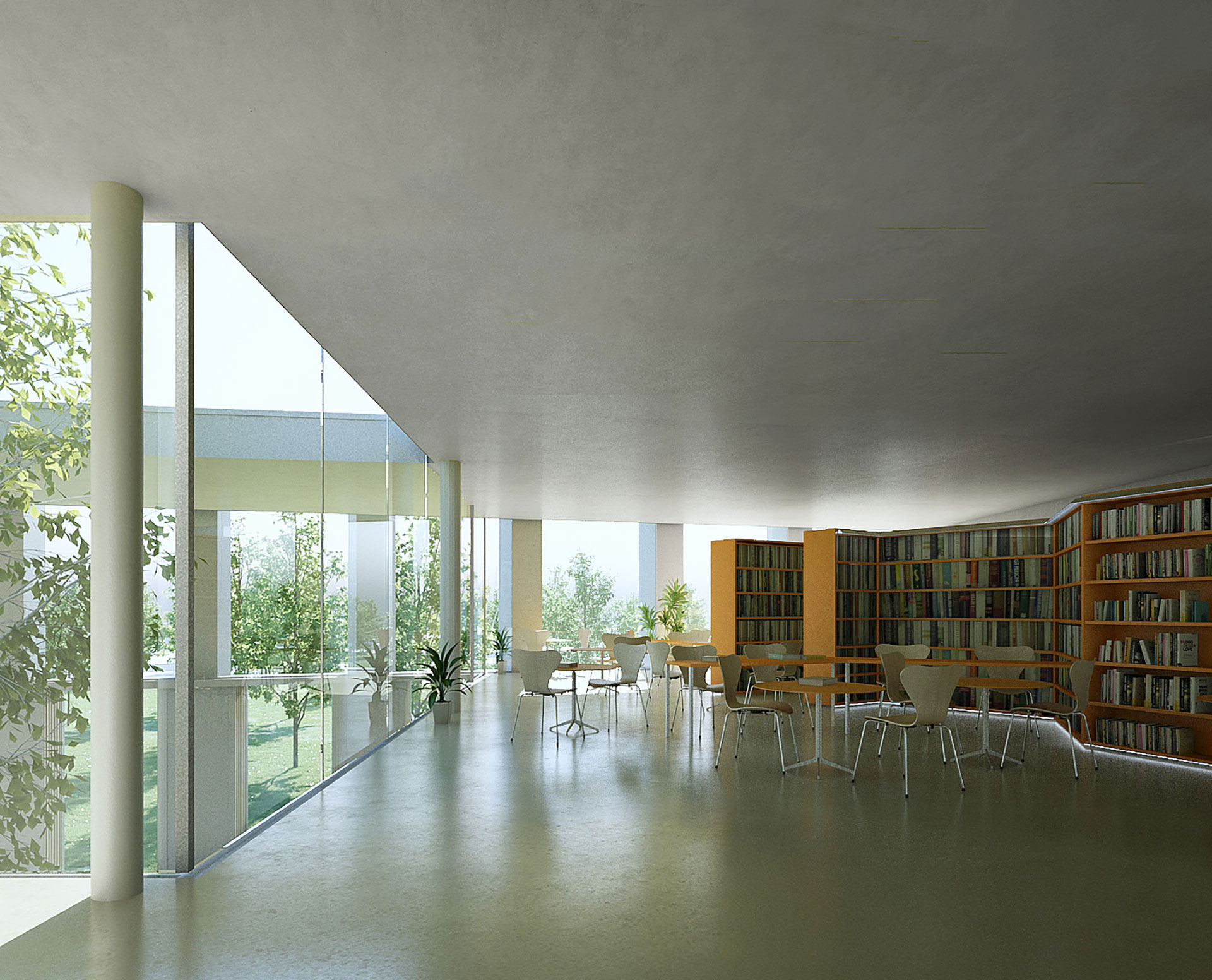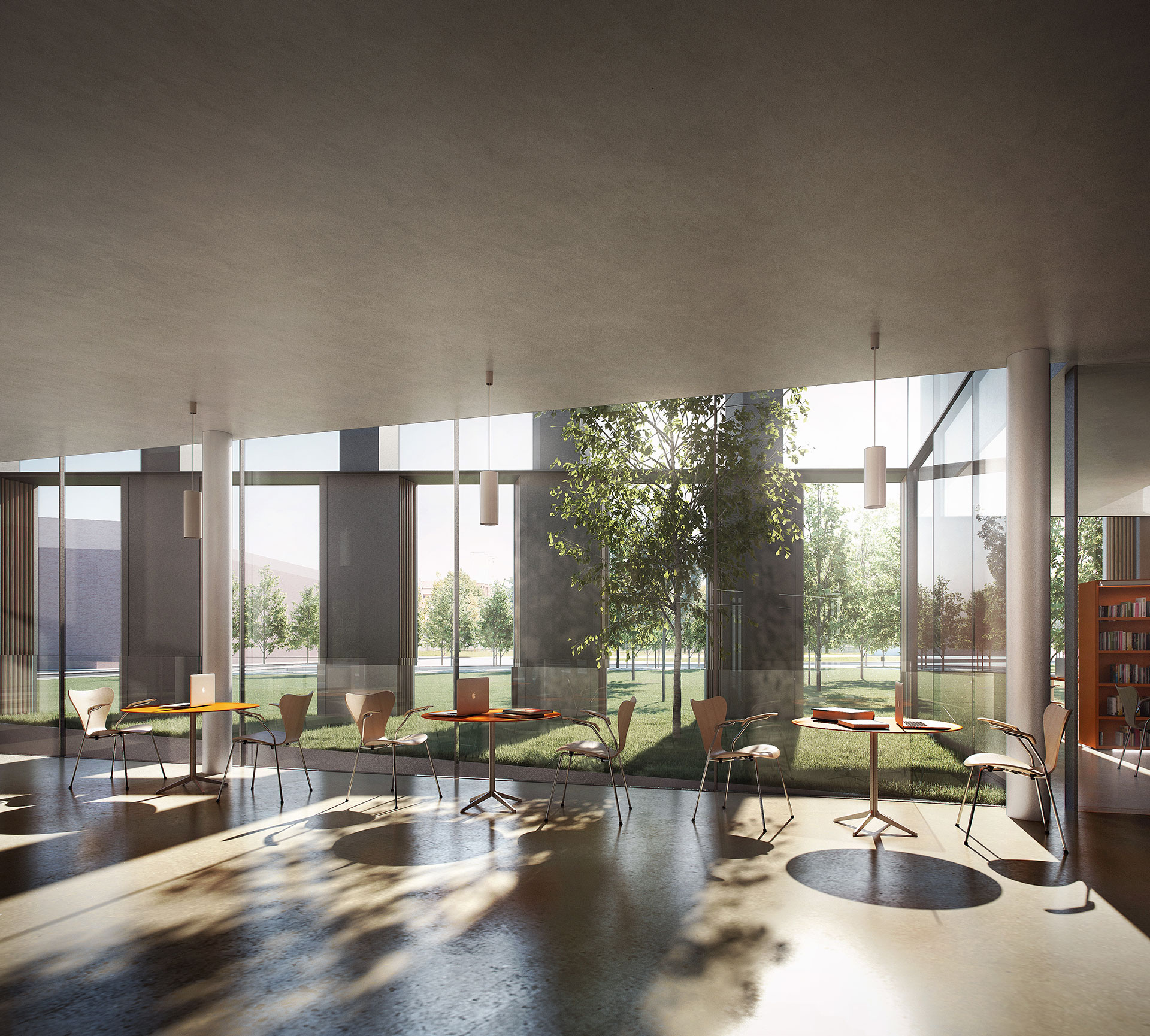Nuevo centro cultural y biblioteca en Legnano
El nuevo Centro Cultural y Biblioteca de Legnano está ubicado en el límite del Parque Público Falcone Borsellino, frontera con el tejido urbanizado, ubicado al noroeste, dentro de la antigua zona industrial «Cantoni». La biblioteca de Legnano por las características formales que la definen y la ubicación en la que se encuentra se identifica como un edificio urbano, a la vez que un pabellón del propio parque.
Hacia el parque, el edificio construye sus límites y le da una nueva identidad. Se define hacia el parque, como un contrapunto al frente de la ciudad, una arquitectura abierta, ligera e inmaterial, reflejando el parque y haciéndolo suyo al mismo tiempo.
El espacio interior sintetiza los componentes volumétricos, estructurales y distributivos, proponiendo una secuencia espacial que permite a los usuarios tener una visión general del interior a pesar de que está funcionalmente dividido.
Esta síntesis tiene lugar a través de cuatro elementos: la forma compacta, la división del espacio en el centro a través de los núcleos de conexión y el servicio que se convierten en elementos estructurales, la doble altura del espacio después de la entrada que permite una mirada transversal y finalmente el sistema de patios acristalados que da forma a los espacios permitiendo la continuidad visual a pesar de la división funcional.
Ciudad
Legnano
País
Italia
